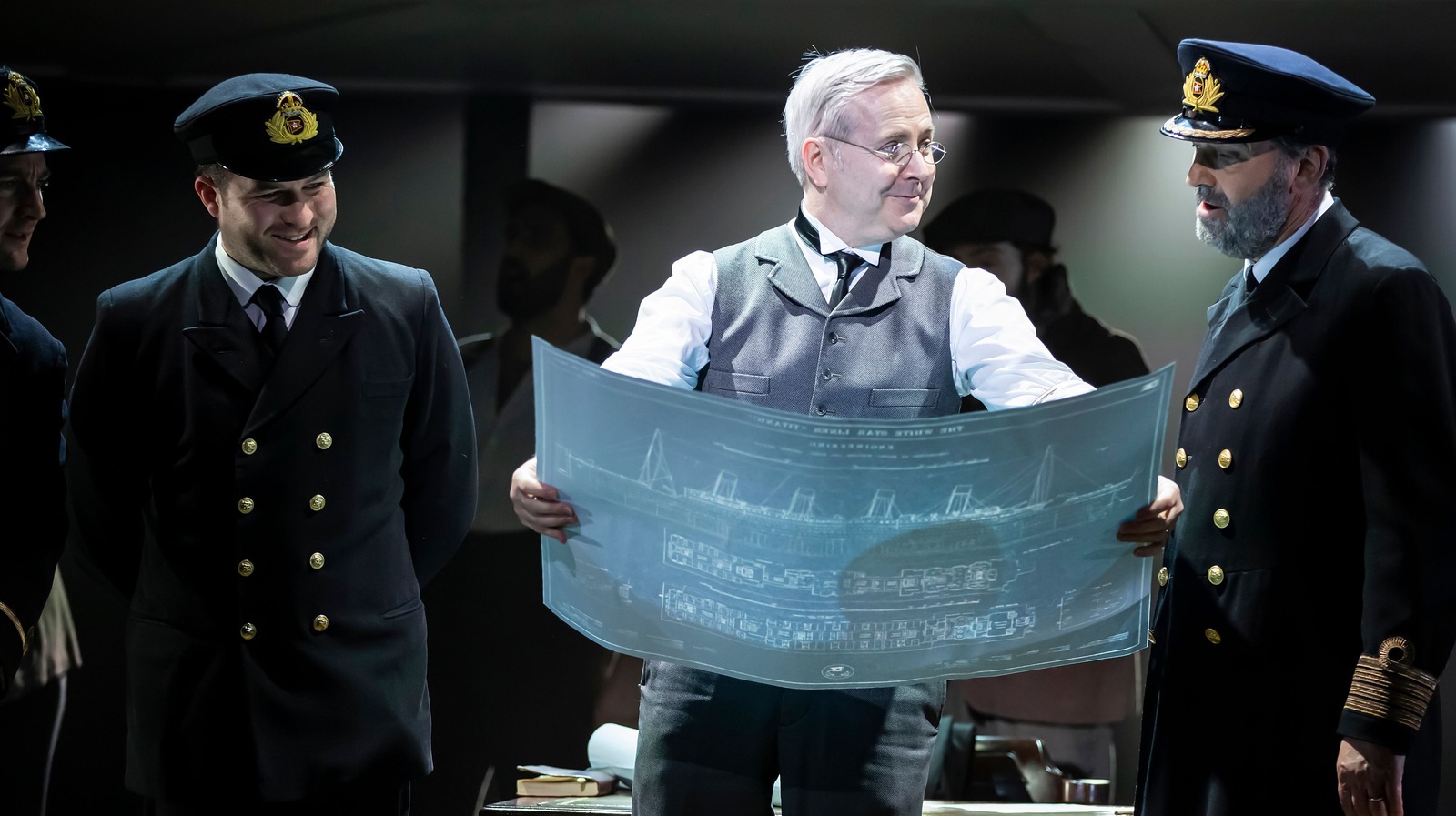
In a matter-of-fact portrait of class hierarchies, Peter Stone’s book rotates around multiple passengers and seafarers — directly or loosely inspired by real people — without a central protagonist. Gracing the first class, Isidor (David Delve) and Ida Straus (Valda Aviks) discuss their legacy with their ownership of Macy’s. The second class Alice Beane (Bree Smith, whose high-wattage giddiness lights up any scene) sneaks around the first-class amenities, much to the chagrin of her husband, Edgar (James Darch). Below in third class, a pregnant-out-of-wedlock Irish immigrant, Kate McGowan (Lucie-Mae Sumner), has her eye on a fellow immigrant, Jim (Chris Nevin). Deeper in the bowels, the coal shoveler Frederick Barrett (Sam Brown) pines for his sweetheart, while lamenting that the proletariat labors only feed into the glories of their masters. He befriends Harold Bride (a charming Alastair Hill), a wireless telegraph operator, who extols his nerdy love of the telegraph in the wholesomely techno-optimistic “The Proposal/The Night Was Alive.” And I’m just naming a few drops in a sea of characters.
However, lording above all these tales of love and American Dreams, human oversight is shaking hands with the greed of capitalistic interests. Politics brew between Captain Edward Smith (a dignified Graham Bickley), the shipbuilder Thomas Andrews (Ian McLarnon), and Chairman J. Bruce Ismay (Martin Allanson, who stops short of cartoonishness). This particular staging opens and bookends on the guilt of Ismay, who pressures Captain Smith to accelerate the maiden voyage to impress the news headlines. Although these men’s real roles in the tragic sinking have been subject to historical controversy, these fictionalized tensions contribute to a cautionary tale about powerful men inflating their pride in their “Unsinkable” creation and the passengers that pay the price.
The musical staging by Cressida Carré, Southerland’s direction and David Woodhead’s set design shoot for economical rather than go-for-broke grandeur. Many productions have ramped up the spectacle, dating back to Stewart Laing’s Broadway generous multi-level set design and Michael Cerveris singing Mr. Andrews’ death aria while balancing on a 30-degree sloping set around sliding furniture. That’s not even mentioning the Serenbe Playhouse’s 2018 production that mounted Adam Koch’s sinkable set design over a lake. By comparison, Southerland conducts the effects at a modest, but still effective, scope: the sweep of Howard Hudson’s lighting and Andrew Johnson’s groaning sound design to signal the iceberg collision and a second-story scaffolding that tilts for a one-person stunt.
